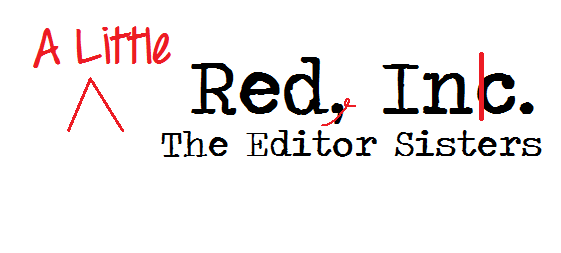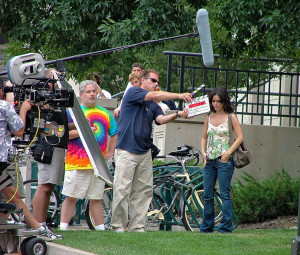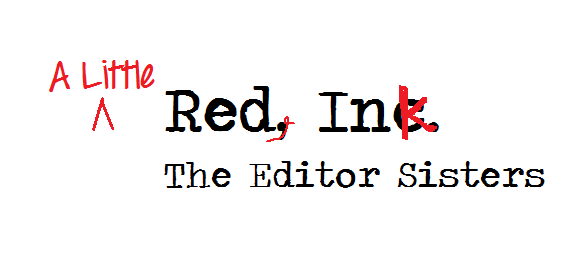When you write dialogue, think like a screenwriter. Every minute of screen time, every word counts. Don’t add fluff.
You don’t want readers to skim your conversations because nothing’s happening. If it doesn’t move the plot forward, cut it, cut it, cut it.
Here’s something else that doesn’t belong in your conversations: director commentary.
Sure, people buy DVDs with bonus footage, but I don’t know many people who actually watch the version with the director chatting the whole time—explaining, telling what he wanted from the scene, making himself sound generally witty. (Peter Jackson doesn’t count. Of course you watch those.)
Seriously, though. Audiences want the end product. They want to be entertained. They want the scene to play out in their mind. And they don’t want to think for one second about the writer behind the scenes—at least the first time.
Here are a few dialogue tips to help you accomplish that.
1. Use the word “said.” Avoid sounding like a thesaurus with your dialogue tags. No one wants to be wowed with your synonym skills. Statistics show that readers actually skip over the word “said” in their reading. It doesn’t even register. All they see is dialogue (which is what you want).
If your characters are replying, interrupting, cajoling, remarking, and muttering? There’s no way people can miss that.
“Are you kidding me?” Jen queried. “Just tell me we can undo it,” she complained. “What will it take?”
“We’ll do what we have to do,” Will countered.
“We better,” she sniped. “If we lose this account because you dropped the ball—”
“Relax,” he challenged. “Your attitude isn’t going to help us win them over.”
It can get annoying after a while, right?
3. If the characters are taking turns nicely, don’t tag every give and take. Sometimes, it’s obvious.
Will stood a little taller. “We’ll do what we have to do.”
“We better. If we lose this account because you dropped the ball—”
“Relax. Your attitude isn’t going to help us win them over.”
Jen rolled her neck and closed her eyes. After a few deep breaths, her shoulders relaxed an inch. She met his gaze once more. “I’ll smile, and you dig us out of this hole you got us in.”





 We love helping your growing in your writing career.
We love helping your growing in your writing career.

5 Comments
Great tips. As a reader, it’s frustrating to get bogged down in characters’ dialogue. Thanks for the insight!
This is very helpful, Bethany! I’ll be printing this out for future reference.
Glad you liked it, Cathy. I know dialogue that keeps reminding me of the author is a deal-breaker for me as a reader. I always try to write and edit with that in mind.
Thanks, Bethany, I will certainly use these excellent tips in my WIP!
Wonderful tips. Cecil Murphy did a class on this at a Writer to Writer conference. Such great information. I love action beats.